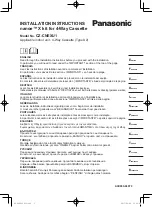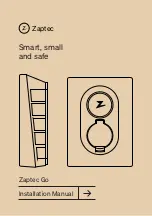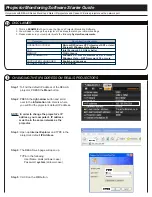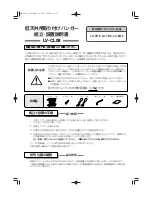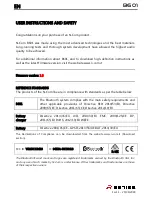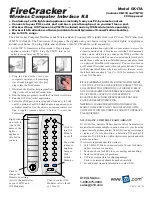
AN-MPU-x000A-01
Document Number: AN-MPU-x000A-01
Page 7 of 14
Revision: 1.1
Date: 06/12 /2015
Figure 4. Example of Single Axis Helmholtz Coil
4.
ACCELEROMETER AND GYROSCOPE DESIGN GUIDELINES
4.1.
PACKAGE STRESS
MEMS accelerometer and gyroscope motion processors are mechanical devices and are affected by package stress. Bending in the
PCB caused by mounting locations, screw holes, or misalignment will transfer board stress to the package, and can alter the output
of the MPU, or in extreme cases may even damage the MEMS structure.
The MPU should be placed in a location where there will be minimal board stress. Typically, this is away from any fixed mounting
location, screw hole, or large insertion components, such as buttons, shielding boxes, connectors, etc. During the design phase, the
estimated misalignment, mounting method, and board geometry may be used to determine the areas which have the least internal
stress, through static or finite element analysis.
Package stress can also be introduced from thermal sources during soldering or reflow processes. Uneven thermal expansion and
cooling during the assembly process introduces this stress. It is recommended not to exceed the conditions in the reflow diagram
provided within the device’s Product Specification document. This diagram represents maximum conditions required for component
reliability testing. Typical lead-free reflow solder processing is conducted between 235°C and 260°C.
It is recommended not to hand solder the MPU, as the uneven application of heat during soldering may introduce an undesired bias
offset in the part. Do not place any component pads or vias within 2mm of the package land area, in order to ensure even cooling
and minimal mechanical coupling between the MPU and adjacent devices.
Any epoxy-sealed parts on the board should be placed away from the MPU such that the epoxy resin does not come in contact with
the package. Curing shrinkage or uneven thermal expansion may introduce package stress and adversely affect the sensor output.
Keep the distance from the MPU more than 15mm away from bridges for PCB separation by router (fig. 5). Deflection from a routing
drill or saw can damage the MEMS device. Similarly dull router bits and saw blades can cause excessive mechanical vibration; which
should be avoided. Do not snap apart panelized boards, since snapping apart the PCB boards may introduce severe bending forces
and mechanical shock which may damage the MPU.
Figure 5. Recommended Distance from Panelized PCB Bridges
Do not place connectors or test points for Pogo pins on the PCB surface below the MPU location, as in figure 6. Deflection and shock
from snapping the connectors and pressure from the Pogo pin during functional test on a production line may damage the MEMS
part.















